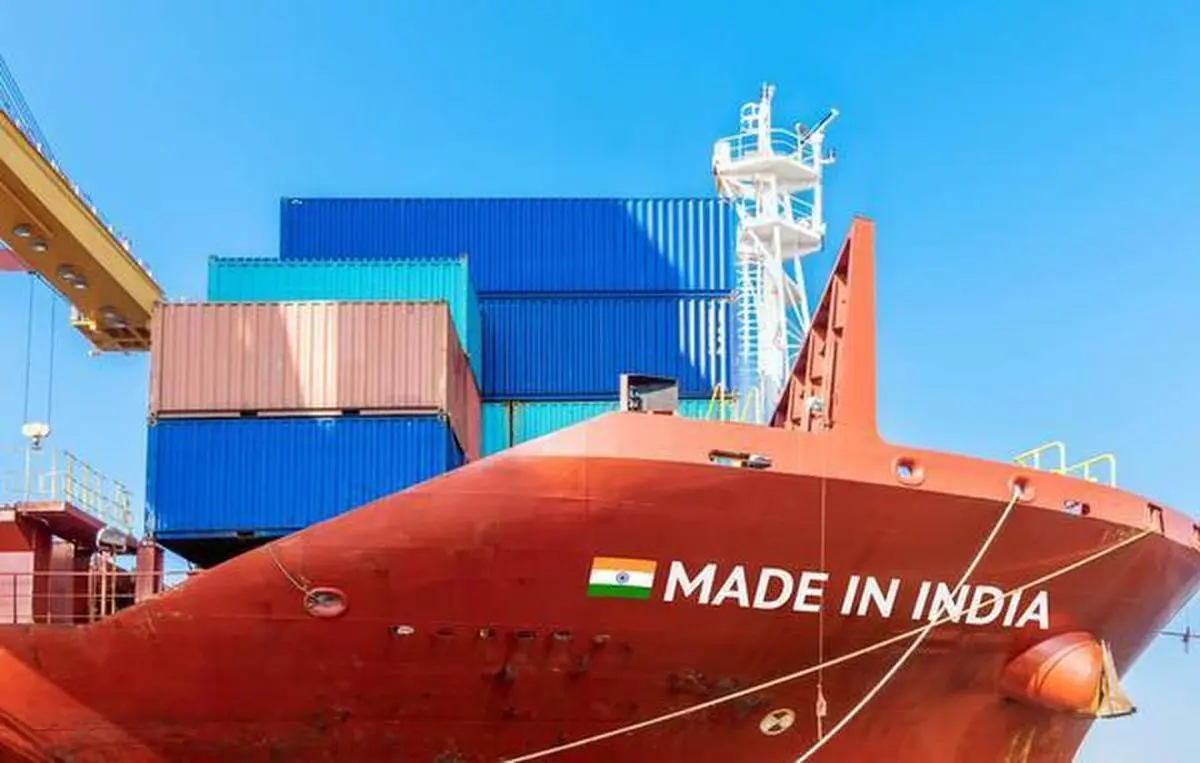India Plans Second Ship Registry to Woo Back Tonnage Lost to Flags of Convenience
The Indian government is exploring the creation of a second ship registry, a move aimed at reclaiming national tonnage that has drifted to foreign flags of convenience (FOC) regimes, following the enactment of the new Merchant Shipping Act, 2025, a senior official has confirmed.

The initiative is part of a broader maritime reform strategy to modernize India’s shipping laws, make the Indian flag more attractive for shipowners, and align the country’s maritime framework with international best practices. Modeled after successful international registries in Norway, Denmark, and the United Kingdom, the proposed second registry seeks to provide a competitive and flexible platform that allows Indian and foreign shipowners to register their vessels under the Indian flag with greater operational and fiscal ease.
Confirming the development, Shyam Jagannathan, Director General of Shipping, said that the plan is currently being shaped under the provisions of the new Act. “As provided under Sections 14 and 15 of the new Merchant Shipping Act, we are in the process of formulation of rules for registration and chartering of vessels, including ships acquired through the bareboat charter-cum-demise (BBCD) model,” he stated.
Jagannathan added that the second ship registry will likely be domiciled in Gujarat International Finance Tec-City (GIFT City) — India’s only International Financial Services Centre (IFSC) — which has already positioned itself as a rising hub for ship leasing and maritime finance. “GIFT City will be provisioned a specific dispensation to equate its ease of doing business to international maritime hubs like Dubai, Singapore, and Hong Kong,” he noted. “The draft rules should be ready by January 2026.”
India’s merchant fleet, despite being one of the oldest maritime communities, accounts for less than one percent of the global fleet, a figure that starkly contrasts the country’s economic and trade potential. A significant portion of India-linked cargo continues to be carried on foreign-flagged vessels, leading to foreign exchange outflows and reduced domestic maritime influence.
Over the years, shipowners have migrated to flags of convenience such as those of Panama, Liberia, and the Marshall Islands. These registries attract tonnage with low taxes, flexible crewing regulations, and minimal compliance burdens, advantages that India’s traditional shipping regime could not offer under its earlier legal and fiscal framework.
The new Merchant Shipping Act, 2025, is designed to change that. It introduces liberalized ownership norms, allowing foreign participation in Indian-flagged shipping companies, streamlines ship registration processes, and promotes ship leasing and chartering mechanisms such as BBCD — measures aimed at reducing barriers to entry for both domestic and international shipowners.
By creating a dual registry framework, the government hopes to mirror the success of models such as Norway’s NIS (Norwegian International Ship Register) and Denmark’s DIS (Danish International Ship Register) — both of which revitalized their national shipping fleets in the 1980s by providing competitive tax regimes and flexible operational policies.
The decision to anchor the second registry within GIFT City underscores the government’s vision to turn the enclave into a comprehensive maritime and financial hub. Operated under the Special Economic Zones (SEZ) Act, GIFT City already enjoys tax incentives, simplified regulatory oversight, and international-level financial services infrastructure — factors that have spurred growing interest from shipping and leasing companies.
Since the introduction of the ship leasing framework in 2021, GIFT City has seen several international players set up bases to finance or lease ships, aircraft, and offshore assets. The establishment of a ship registry within the IFSC is expected to complement these financial services, offering a one-stop ecosystem for registration, financing, and management of Indian-flagged vessels.
“The addition of a registry in GIFT City will further enhance its attractiveness as a maritime finance hub,” said a senior industry executive involved in ship leasing operations. “It will bridge the gap between financial services and maritime operations, offering Indian owners a competitive alternative to traditional foreign registries.”
A ship registry is more than an administrative record. It defines the nationality, ownership, and legal identity of a ship, determining which laws and safety standards apply to it. Ships registered under a national flag are subject to that country’s jurisdiction, maritime safety rules, crew standards, and fiscal regimes.
India’s existing ship registration system, managed by the Mercantile Marine Department (MMD) under the Directorate General of Shipping, has long been criticized for bureaucratic delays and rigid compliance norms that deterred shipowners. The new Act and the proposed registry aim to streamline procedures, enable digital registration, and allow ease of mortgage and transfer of ownership, aligning with international conventions like the UN Convention on the Law of the Sea (UNCLOS) and the International Maritime Organization (IMO) guidelines.
The upcoming registry at GIFT City, according to officials, will be digitally driven, with minimal human interface and online verification of ship documents, enabling faster turnaround for owners and operators.
Industry experts view the proposal as a strategic economic reform that could help India capture a greater share of its maritime trade under its own flag, thereby increasing foreign exchange retention, creating maritime jobs, and strengthening India’s voice in international shipping forums.
“India’s dependence on foreign-flagged vessels has long been a weak link in its logistics chain,” said a senior maritime analyst. “A second registry could help reverse this trend by offering fiscal and operational parity with FOC regimes while retaining regulatory oversight under the Indian flag.”
In addition, the registry is expected to boost ship financing, insurance, and allied maritime services, drawing global players to the GIFT City ecosystem. It could also attract Indian-controlled fleets currently registered abroad to return home under more favorable terms.
The reform aligns with India’s Maritime India Vision 2030, which targets the country to become a top 10 ship-owning nation and a major player in global maritime logistics. The policy push is expected to strengthen the “Make in India” and “Atmanirbhar Bharat” initiatives by promoting domestic shipbuilding, repair, and ancillary industries.
Globally, the concept of dual or international registries has proven to be a successful policy instrument. Norway’s NIS and Denmark’s DIS revitalized their respective fleets by allowing ships engaged in international trade to fly their national flags without being subjected to the same domestic crew and tax regulations as their national registries.
The United Kingdom’s Red Ensign Group, for example, operates multiple registries under its jurisdiction, such as the Isle of Man and Gibraltar, which have become popular with global shipowners. These registries balance regulatory compliance with operational flexibility, helping their parent nations maintain maritime influence despite global competition.
By adopting a similar model, India aims to regain control of its tonnage base, reduce dependency on foreign registries, and integrate more deeply into the global maritime network.
Despite the optimism, industry observers caution that the success of India’s second registry will depend on its policy design, governance structure, and competitive offerings.
“If the new registry simply replicates the existing bureaucratic structure, it will fail to attract owners,” warned a ship management consultant. “It must ensure autonomy, transparency, and alignment with international best practices, including taxation, manning flexibility, and vessel mortgage procedures.”
Moreover, coordination between the Ministry of Ports, Shipping and Waterways, the IFSC Authority, and the Directorate General of Shipping will be crucial to ensure regulatory clarity and operational efficiency.
As India’s economy grows and its trade volumes expand, the need for a robust, modern, and globally competitive maritime framework has become evident. The proposed second ship registry, housed in GIFT City, marks a pivotal shift in India’s maritime governance — one that could reshape the country’s position in the global shipping arena.
If implemented effectively, the registry could not only bring back ships under the Indian flag but also propel India toward becoming a regional maritime hub, offering an integrated platform for shipping, finance, and trade.
As the world’s major shipping nations reinvent their maritime policies for the 21st century, India’s bold step to open a second ship registry may well turn the tide — from losing ships to foreign flags, to reclaiming its rightful place on the global seas.
Author: shipping inbox
shipping and maritime related web portal









